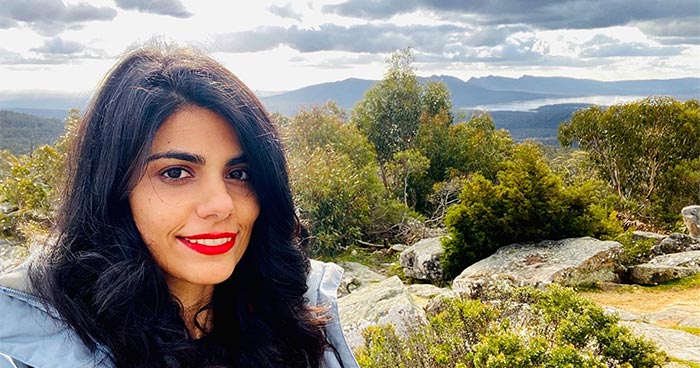Fellowship helps to engineer safer foundations for our communities
Identifying vulnerabilities in critical infrastructure such as bridges and dams before they fail is the focus of Dr Negin Yousefpour’s research at the University of Melbourne. To do this, she harnesses the power of advanced technologies including AI and computational geotechnics.
In one project, she’s focused on evaluating the impacts of bridge scour, which occurs when swiftly moving water erodes sediment around foundations of the infrastructure.
In the United States, where Dr Yousefpour completed her PhD and worked as a geotechnical engineer with the consultancy firm Arup, some 400,000 bridges are affected by scour and many thousands have collapsed. Here in Australia, more than 30,000 bridges are affected by floods and scour. Most of these are in Queensland.

Dr Negin Yousefpour
Dr Yousefpour uses advanced computing systems to harness the power of AI to analyse, model and predict where problems may occur. Based on huge historical, environmental and scientific datasets, the analysis provides insight to better manage risk and keep infrastructure – and communities – safe.
Expanding research opportunities
The Iranian-born researcher moved to Australia in 2018 to be closer to family, still working with Arup, which is involved in Melbourne’s Metro Tunnel project.
After being awarded a 2020 Doreen Thomas Postdoctoral Fellowship for Women in Engineering, Dr Yousefpour now leads several interdisciplinary research teams at the Faculty of Engineering and Information Technology.
These teams are applying advanced computational modelling and AI to a range of geostructural and infrastructure systems in collaboration with industry and government partners.
Bridge scour is one project. Another aims to detect internal erosion in dams. A third assesses offshore geohazards, such as underwater landslides and excessive erosion, to keep energy infrastructure including oil platforms and pipelines safe.

Dr Yousefpour is also using advanced computational modelling to analyse soil-structure behaviour under a range of hazards and impacts, such as earthquakes and collision.
She says the University’s fellowship provides a rare chance to develop her team to scale up research that will have a real impact in the community.
“It gives me the freedom to focus on my industry-based research and develop it with more time and more resources. The University is a great environment to do collaborative research. Working with people in the department will be very helpful and having PhD students in my research groups is a great opportunity.”
Smarter risk assessment
Her early career experience working with industry provides a valuable perspective into the research needs in different sectors. This perspective guides applications for advanced technology and emerging technical tools to find more effective and reliable solutions to these industry challenges.
The assessment of geohazards, such as scour and erosion, combines her passions for the environment, sustainability and public safety. According to Dr Yousefpour, “without having proper models to predict and forecast this erosion we will see more and more failures that have fatality and other risks.”
In dams, for example, internal erosion can lead to collapse, posing a significant risk to people and cities. She cites a recent case in which a Yarra Valley dam, relatively close to Melbourne, showed signs of failure due to internal erosion. To mitigate risk, authorities had to lower the water level in the dam, significantly reducing overall capacity of the reservoir to supply water to Melbourne.
New technology could make such measures avoidable.
“With smarter models that can detect internal erosion early on, we can prevent it progressing before it becomes so significant that we have to lower the capacity of the dam.
“This would be beneficial for both sustainability and public safety. The risk to the public is huge if a dam fails. We need to use these new and emerging technologies to benefit our infrastructure systems, better manage risk and create safer communities.”